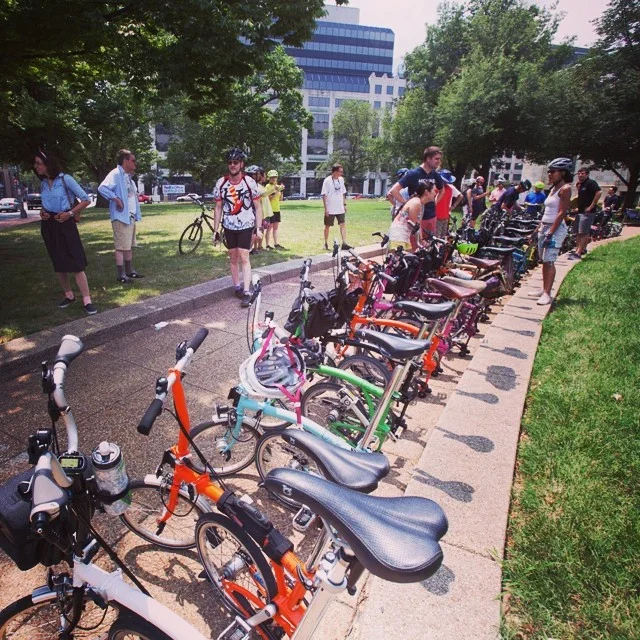As an introduction, I’m Erik Kugler and I’ve been riding bicycles in the Washington, D.C. region for more than 20 years. I have never once been involved in an accident.
I’ve followed with great interest the media debate about cycling scofflaws. As more and more people start using bicycles as transportation, it’s apparent that our traffic laws and infrastructure willfully ignore the safety needs of people riding bicycles.
I was asked in my City Paper interview whether I wear a helmet and whether I run red lights. That question has caused me to circle back and re-examine the expectations of the general public and even bicycle advocacy organizations and to compare that with what is actually the best for people who get around by bicycle.
Overall, the primary concern for me while I’m out on a bicycle is to get to my destination as safely as possible, intact to carry on living and ride another day. This is the guiding frame of reference for the advice I’m about to give.
Unfortunately, the people who design and implement our bicycle infrastructure do not have the same priorities. Often, the main criterion for infrastructure designers and traffic-flow experts is getting as many cars moving as swiftly as possible, not protecting the lives of bicyclists and pedestrians and our most vulnerable – the young, the old and the sick.
We in D.C. are projected to have a population increase of 20,000 per year for each of the next 10 years. If you’ve been downtown – or even uptown – during rush hour, you’ll see that we’re already at maximum car capacity.
With more and more people moving into the city and the roads already at capacity, many are turning to the bicycle as transportation. This is happening and will continue to happen, whether our Department of Transportation (DDOT) likes it or not.
If they do not build a safe bicycle infrastructure, we will experience more and more chaos on the roads, characterized by hot tempers and confrontation. And it won’t take much for it to spiral out of control. The moveDC plan is a great step forward. If it is not implemented rapidly and the situation descends into more consistent chaos, then it will be the leaders at DDOT and those who give their marching orders who are responsible. I would hope that no one would want to be responsible for creating a violent dynamic, even if it meant that there were vocal complainers, led by people like Courtland Milloy and his employer, the Washington Post.
Until we get a safe, connected bicycle transportation system, we all need to use what I’ve learned over the past 20 years to stay safe and avoid confrontation.
Most of riding safely is knowing the danger points and avoiding them either altogether or before they become an issue. As corny as it sounds, I use the I.P.D.E. method which I was taught in high school drivers ed. Identify, Predict, Decide, Execute. That would be the one sentence which sums this all up.
What are the major danger points, the potentially dangerous situations to avoid?
First, identify the flashpoints.

































